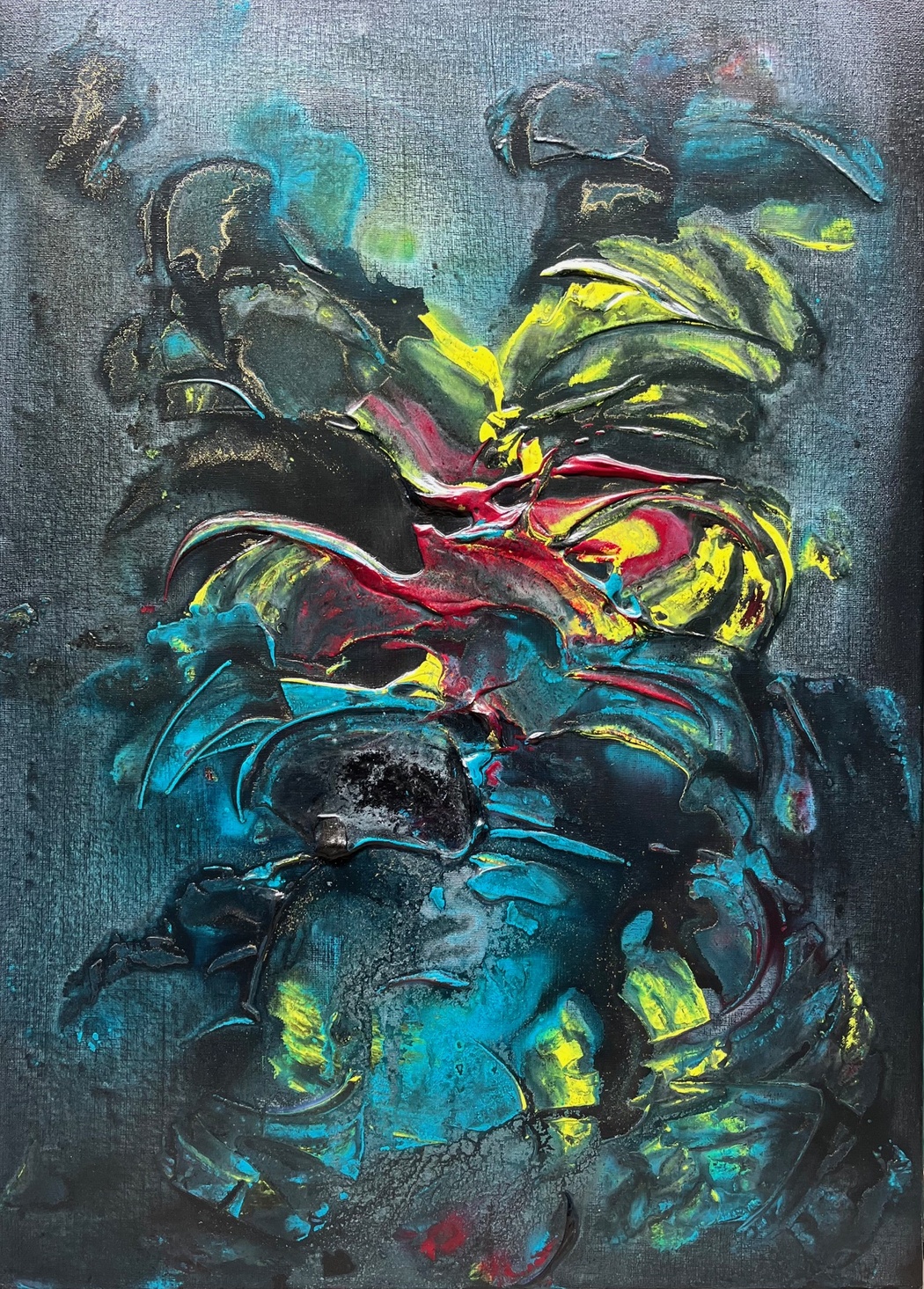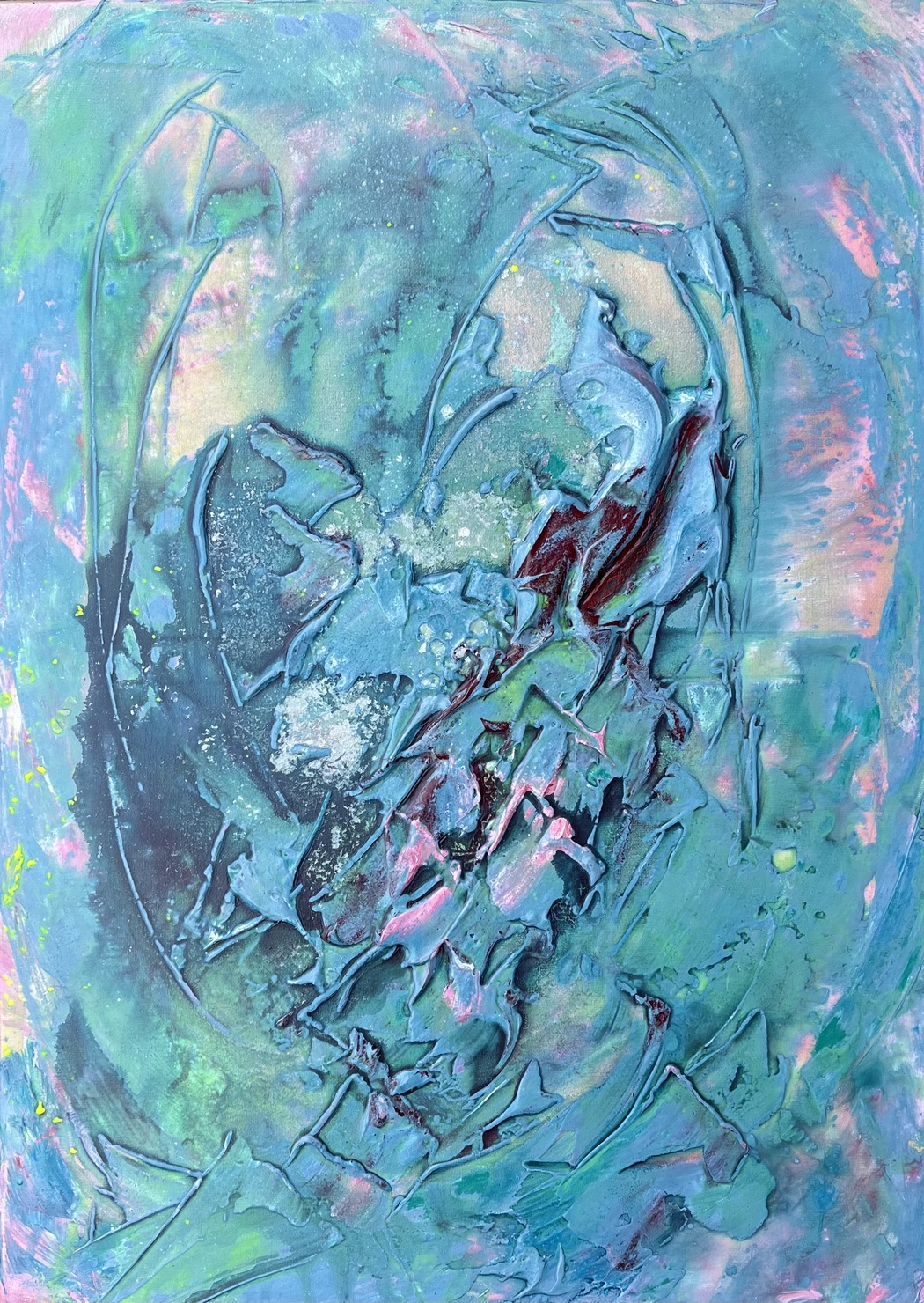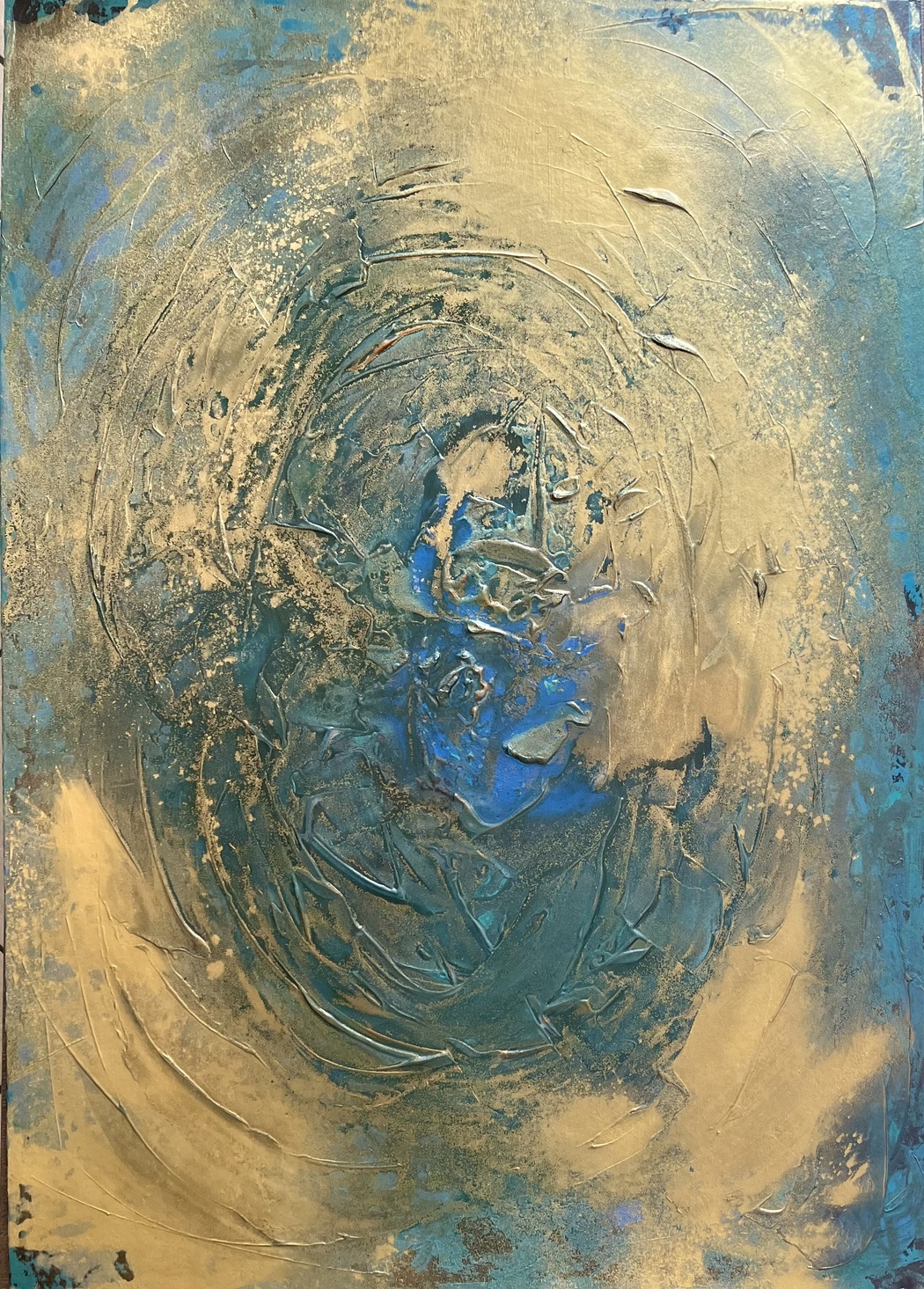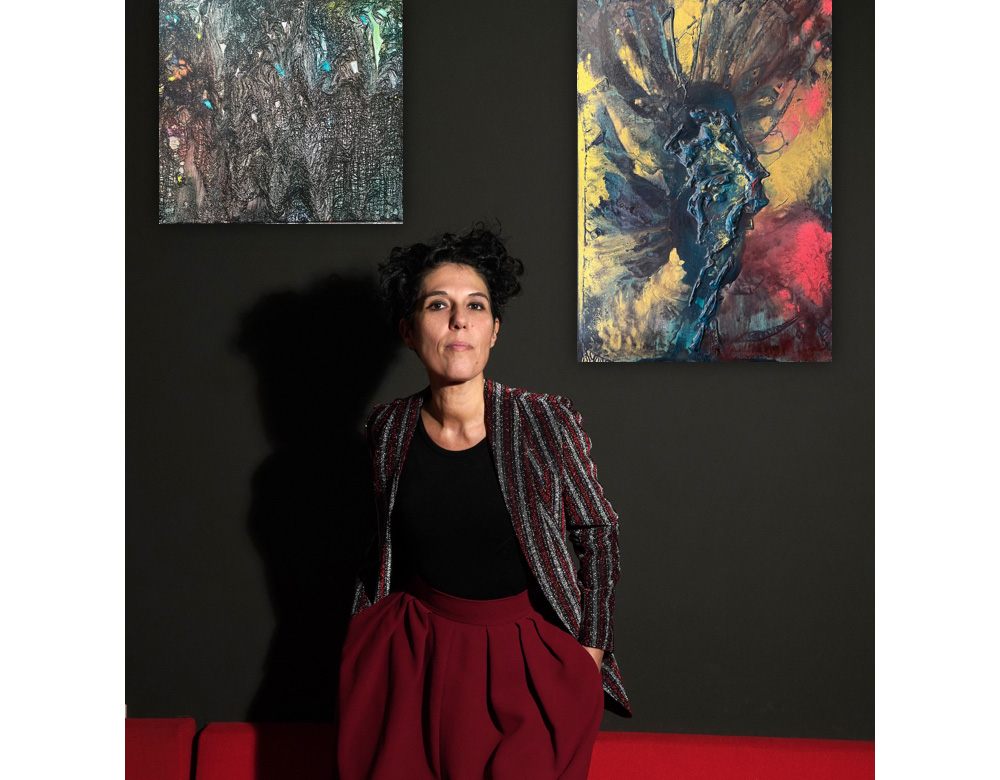Cristiana Giacchetti
Year of birth: 1975.
Where do you live: Milan.
Describe your art in three words: lyricism, primordiality and pareidolicity.
Your discipline: acrylic, sculptural, painting.
Website | Instagram
What was it about your family’s artistic legacy that inspired you to pursue a career in art?
What pushed me into the “arms” of art is the spirit of the artist that lives in me and that for many years, before I began my artistic career, was reflected in the images of my family heritage. On one hand, my great-grandfather Aristodemo Giacchetti, a fresco artist from central Italy. A creatively very “cumbersome” figure. Even though I never met him directly, suggestive stories about him live in me. My great-grandfather is a precious gem in the genetics of my Soul, as he profoundly influences my way of being an artist more than the technique. Equally important is my father-in-law, Gualtiero Mocenni, an Istrian painter and sculptor, who recently turned 90, celebrating with a retrospective of his 70-year career. Even though he never trained me, in over twenty years, he was a model who traced my path, as from him I learned the courage to experiment and to offer myself to art. So I can say that I did not receive an artistic education but I had a strong inspiration to art. In fact, both these figures have awakened in me the spirit of the artist who for many years has been champing at the bit to exist and then found its form in reality.
You mention a personal evolution in your work—how would you describe this journey, and how has it influenced your current artistic practice?
My path has been an alchemical journey, as I slowly revealed to myself, and then to the world, my artistic nature that was obscure even to me. Before then I worked for a long time in corporate communication as a consultant. But I felt that something was wrong, there was a lot of frustration and dissatisfaction inside me. So I started studying coaching and counseling to delve deeper into personal dynamics and then I moved on to shamanism. Following these studies I started helping people in their personal evolution. In the meantime I continued to learn, studying Jung’s shadow and alchemy. In this way I understood that what I was missing was inside me, not in the world out there. During the pandemic I started painting to discover myself. The pandemic is over but the love for art remained because it is the way through which I discover the images of my Soul.
 Cristiana Giacchetti | Caos armonico | 2024
Cristiana Giacchetti | Caos armonico | 2024
Can you explain how your focus on the “Soul” and “Psyche” manifests in your artworks? Do you have a specific process for exploring these themes visually?
The core of my art is my inner world, what the ancients called Soul and depth psychology calls Psyche. It is the essence of every individual, darkness but also light and beauty. My goal is to investigate its language which is made of images. My creative process is an act of surrender, as I begin by emptying my mind to ensure that my will and reason do not interfere. My gesture must surrender to the beauty of the Soul that wants to manifest itself through the work. Consequently, I do not decide the form first, I simply follow the flow of ecstasy with the utmost trust that the form will advance.
The idea of pareidolicity, or seeing shapes in the abstract, plays a key role in your art. Could you tell us more about how this concept informs your creations and how viewers might engage with it?
The theme of pareidolicity is a key element of my art and translates into that phenomenon of the subconscious according to which the mind tends to recreate a form through optical illusions. I did not decide this intentionally, but at a certain point, while creating my works, I realized that the viewer saw in them always different forms, not necessarily the same ones in the same work. This depends on the person. Some images are romantic, others are brutal, others are scary. Forms that arouse emotions and lead the viewer to discover parts of themselves. Therefore, since art is made of images, what I paint manifests a form of my Soul, a state of mind precisely, but on the other hand that work also becomes a photograph of the inner world of the person observing it, who sees himself through me and therefore the work. In some way, therefore, the paintings I create are messages from the Soul of those who contemplate them.
 Cristiana Giacchetti | Nutrice | 2024
Cristiana Giacchetti | Nutrice | 2024
How does the medium you choose—especially your use of thick paint applications—contribute to the emotional depth and intensity of your works?
More than the medium, I am interested in the dimension of the struggle. The work manifests my internal struggle, between who I am and who I think I am. For this reason, it is crucial to empty my mind and let the Soul, the unfiltered me, guide me. In each of my paintings, this tension manifests itself in the materiality of the work, which is realized in almost sculptural forms, as if the image, which is being composed, wanted to emerge from the canvas. The final result is visually engaging. The work seems to solicit a visual dialogue with the viewer, almost “sucking” him inside to lead him on an emotionally intense journey. It doesn’t matter whether the reaction is good or bad, what interests me is the dimension of the intensity and emotional intimacy of the observer.
Your work is described as a dialogue with your unconscious. How do you feel this dialogue takes shape during your creative process? Does it evolve as you work on the painting?
Art for me has always been a dialogue with my dark side, a giving shape to what I mistakenly defined as “discomfort”, consequently the more I painted the more that apparent “ugliness” became “beauty” in the form of a work. So art is actually a therapy of form. It was liberating and helped me understand how much beauty there actually is in what we judge as discomfort. An emotional state that for the artist is a source of inspiration, that leads you to descend into your inner caves to ascend with a work of art. In this sense, every work of art is ultimately nothing more than a sublimation of an artistic pathology, just as the pearl is the disease of the shell. And since I follow the ancestral nature of the gesture, I never know what I will paint first, the form for me is pure discovery that deforms and then recompacts into something new that I discover only at the end. In that moment I see a snapshot of my dream journey. So for me the work is the result of an act of faith in the image that is realized, in the gift that will surface from the ocean waters of the Soul.
 Cristiana Giacchetti | Trascendenza | 2024
Cristiana Giacchetti | Trascendenza | 2024
How does the concept of “spiritual gaze” influence your approach to painting? Do you believe this concept also applies to the viewer’s experience with your art?
As I was saying about pareidolicity, the observer recreates, through an optical illusion, an image revealed by what the philosopher Plotinus called “spiritual sensorium”, the eye that goes beyond the appearances of form and captures the image that the Soul reflects in the painting. In that moment you discover a piece of yourself. This eye does not judge but only sees beauty, in the form of amazement and wonder, without moral judgments, because the Soul in its poetic movements cannot be judged, since, as the ancients teach, it is the divine part that resides in every human being. Therefore my works are mirrors in which I see myself and the observer reflects his own inner world. In terms of my artistic mission, this “relationship” is essential, as my works become a bridge to connect to the psyche of every human being and at the same time a nourishment for the Soul of the individual, which wants to manifest itself through the painting.


Leave a Reply